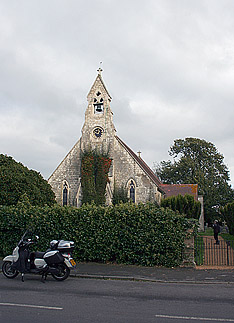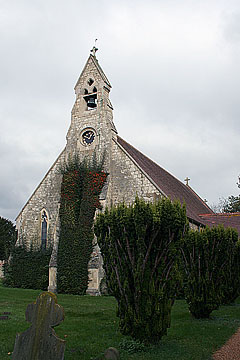St James is a diminutive Victorian church in a diminutive village. Lode stretches along a single road north of the B1102, the main road from Cambridge to Burwell. It follows the little stream of Bottisham Lode to the point where the fens are reached, and presumably originated as a small waterside hamlet within the parish of Bottisham. Just to the west of the village is the National Trust property of Anglesey Abbey, which is well worth a look.
The house itself is a peculiar Victorian pile full of bric-a-brac, the only interesting feature of which is the old monastic undercroft which has been incorporated into the modern building; the gardens, however, are wonderful, and there is an excellent mill at the north end of the estate which is still running and sells excellent oatmeal and flour. It’s possible to buy things from the mill by going to the back entrance in the village, and if you do so, you will notice St James on the right hand side of the road as you drive in.
As I’ve said, it’s a small building, and mostly very plain, with no tower. The west end is topped with a little bell-turret, and the edges of the turret are continued down to the ground by two buttresses decorated with gables. Much of the detail, though, is obscured by a great growth of pyrocanthus which fills the west wall, and (when we visited in late autumn of 2005) carried a stunning display of red berries.
Walking around the church, I liked the little timber porch, with its lantern and wooden benches. I was then baffled by a stone box in the south-east corner of the church, which extended beyond the chancel and looked almost like an electricity substation. In fact, it turns out to be a lady chapel, built by the Fairhaven family between 1960 and 1962 to commemorate Lord Fairhaven, who was the owner of Anglesey Abbey and died in 1966. In addition to this curiosity, there are other extensions on the north side of the church: one is a vestry, and one appears just to provide extra accommodation within. It seems as though, in the case of St James, Victorian ecclesiastical ambition was uncharacteristically limited.
St James is locked, with no keyholders listed.

